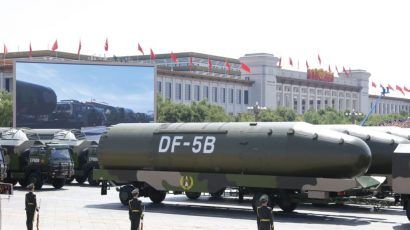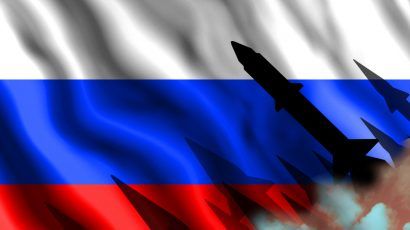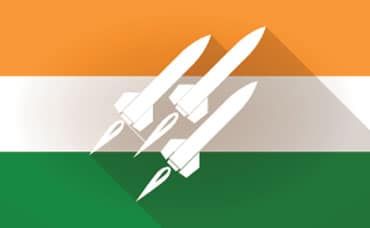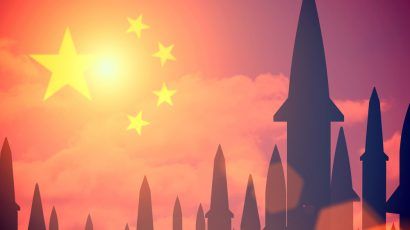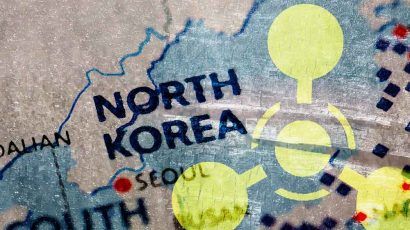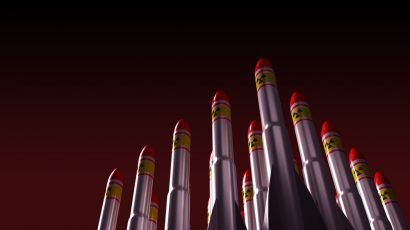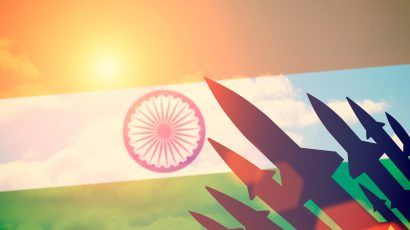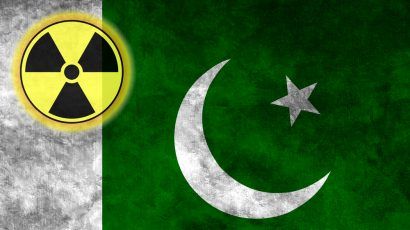Search results for nuclear notebook
French nuclear forces, 2019
A review of France's nuclear arsenal 2019: France's stockpile of approximately 300 nuclear warheads has remained stable in recent years, but significant modernizations are underway with regard to ballistic missiles, cruise missiles, submarines, aircraft, and the nuclear industrial complex.
Indian nuclear forces, 2018
India is estimated to have produced enough military plutonium for 150 to 200 nuclear warheads, but has likely produced only 130 to 140. Free-access.
Pakistani nuclear forces, 2018
The authors estimate that the country’s stockpile could realistically grow to 220 to 250 warheads by 2025, if the current trend continues.
Chinese nuclear forces, 2018
Nuclear Notebook: How many nuclear weapons does China have? China is continuing the nuclear weapons modernization program it initiated in the 1980s, fielding more types and greater numbers of nuclear weapons than before. Since our previous Nuclear Notebook on China in July 2016, the country has continued fielding a new version of an existing nuclear … Continued
Russian nuclear forces, 2018
Nuclear Notebook: How many nuclear weapons does Russia have? Russia is in the second half of a decades-long modernization of its strategic and non-strategic nuclear forces to replace Soviet-era weapons with newer systems. These modernizations, combined with an increase in the number and size of military exercises and occasional explicit nuclear threats against other countries, … Continued
United States nuclear forces, 2018
Nuclear Notebook: How many nuclear warheads does the United States have? At the beginning of 2018, the US Defense Department maintained an estimated stockpile of 4,000 nuclear warheads for delivery by more than 800 ballistic missiles and aircraft. Since September 2009, when the United States announced that the nuclear arsenal contained 5,113 warheads, the stockpile … Continued
North Korean nuclear capabilities, 2018
Nuclear Notebook: How many nuclear weapons does North Korea have? North Korea has made significant advances over the past two decades in developing a nuclear weapons arsenal. It has detonated six nuclear devices – one with a yield of a couple hundred kilotons – and test-flown a variety of new ballistic missiles that potentially put … Continued
A history of US nuclear weapons in South Korea
Nuclear Notebook: How many nuclear weapons does the U.S. have in South Korea? During the Cold War, the United States deployed nuclear weapons in South Korea continuously for 33 years, from 1958 to 1991. The South Korean-based nuclear arsenal peaked at an all-time high of approximately 950 warheads in 1967. Since the last US nuclear … Continued
Worldwide deployments of nuclear weapons, 2017
Nuclear Notebook: How many nuclear weapons are there in the world? As of mid-2017, we estimate that there are nearly 15,000 nuclear weapons located at some 107 sites in 14 countries. Roughly, 9400 of these weapons are in military arsenals; the remaining weapons are retired and awaiting dismantlement. Approximately 4150 are operationally available, and some … Continued
Indian nuclear forces, 2017
Nuclear Notebook: How many nuclear weapons does India have? India continues to modernize its nuclear arsenal with development of several new nuclear weapon systems. We estimate India currently operates seven nuclear-capable systems: two aircraft, four land-based ballistic missiles, and one sea-based ballistic missile. At least four more systems are in development. The development program is … Continued
Russian nuclear forces, 2017
Nuclear Notebook: How many nuclear weapons does Russia have? Russia is in the middle of a broad modernization of its strategic and nonstrategic nuclear forces. While much of this process is simply a continuation of well-known programs that have been underway for many years, some developments are new. These modernizations, combined with an increase in … Continued
United States nuclear forces, 2017
Nuclear Notebook: How many nuclear bombs does the U.S. have? At the beginning of 2017, the US Defense Department maintained a stockpile of an estimated 4,480 nuclear warheads for delivery by more than 800 ballistic missiles and aircraft. This figure is unchanged over the last year. Since September 2009, when the United States announced that … Continued
Pakistani nuclear forces, 2016
Nuclear Notebook: How many nuclear weapons does Pakistan have? Pakistan continues to expand its nuclear arsenal with more warheads, more delivery systems, and a growing fissile materials production industry. Analysis of a large number of commercial satellite images of Pakistan army garrisons and air force bases shows what appear to be mobile launchers and underground … Continued
Chinese nuclear forces, 2016
Nuclear Notebook: How many nuclear bombs does China have? The modernization of China’s land-based nuclear-capable missile force has progressed significantly over the past year, with Beijing fielding a new version of an existing nuclear missile and a new dual-capable missile. The country has also reorganized its nuclear missile command structure. The authors estimate that, in … Continued
Russian nuclear forces, 2016
Nuclear Notebook: How many nuclear warheads does Russia have? Russia is in the middle of a broad modernization of its strategic and nonstrategic nuclear forces. While much of this process continues well-known programs that have been underway for many years, some developments are new. The modernizations, combined with an increased number of military exercises and … Continued
United States nuclear forces, 2016
Nuclear Notebook: How many nuclear warheads does the U.S. have? At the beginning of 2016, the US Defense Department maintained a stockpile of an estimated 4,670 nuclear warheads for delivery by more than 800 ballistic missiles and aircraft. The stockpile did not shrink significantly over the last year, but has shrunk by roughly 350 warheads … Continued
Declassified: US nuclear weapons at sea during the Cold War
Nuclear Notebook: How many nuclear weapons did the U.S. have at sea during the Cold War? Newly declassified documents from the US Defense Department show how many nuclear weapons the United States deployed at sea between 1953 and 1991. The documents, which give totals for the Atlantic Ocean, Pacific Ocean, and Mediterranean Sea, show that … Continued
